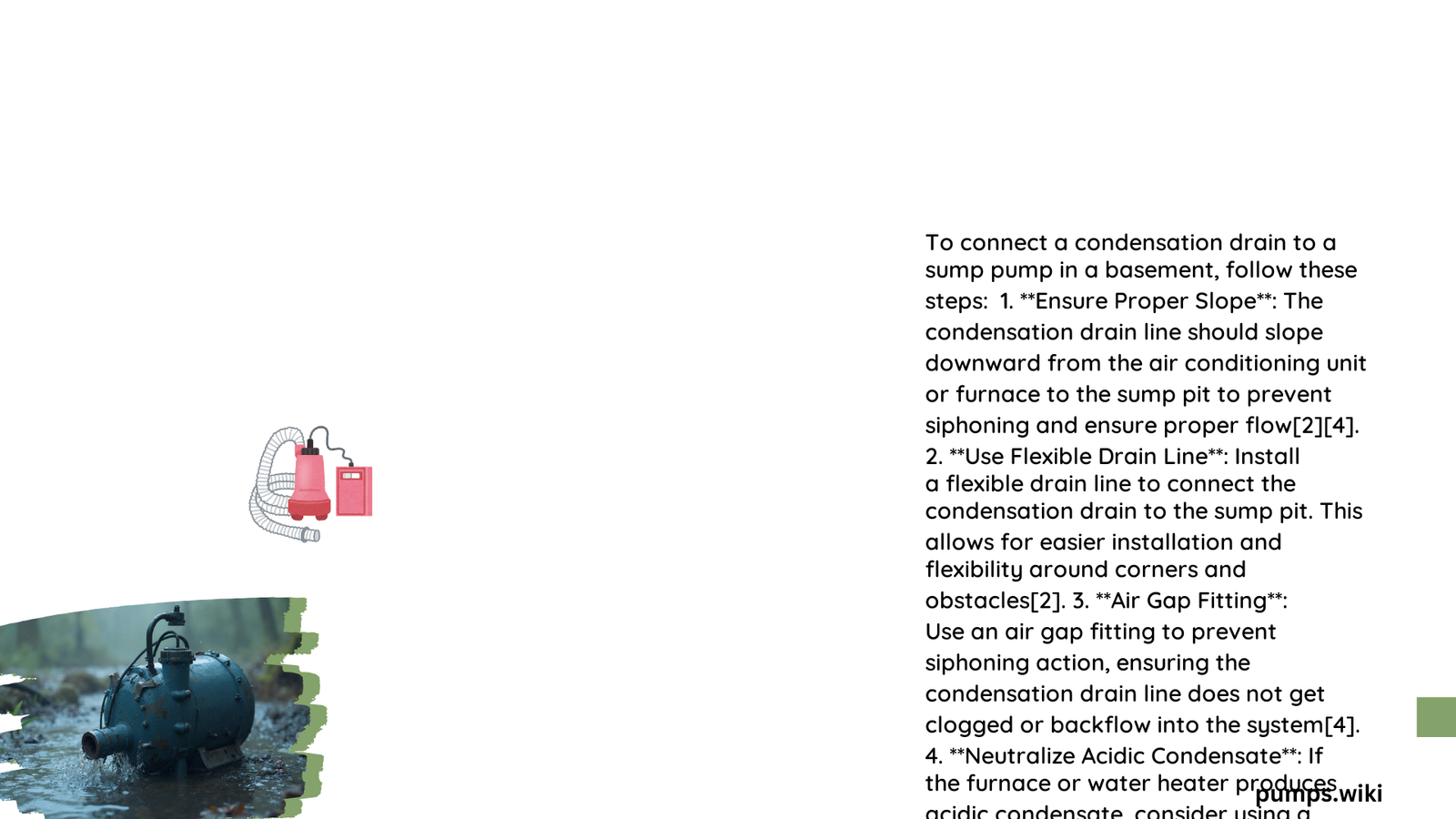Connecting a condensation drain to a sump pump requires precise engineering and strategic planning. Homeowners must understand the technical nuances of pipe diameter, material selection, discharge location, and potential challenges to create an effective water management system that prevents moisture accumulation and protects the home’s foundation from potential water damage.
What Are the Critical Specifications for Basement Piping Connection?
Pipe Diameter and Material Selection
When establishing a basement piping connection between condensation drain and sump pump, selecting the right pipe specifications is crucial:
| Specification | Recommended Standard |
|---|---|
| Pipe Diameter | 1.5 inches |
| Recommended Material | PVC |
| Minimum Discharge Distance | 10-20 feet from foundation |
Key Considerations for Pipe Installation
- Corrosion Resistance: Choose materials that withstand moisture and potential chemical interactions
- Durability: Select pipes capable of handling continuous water flow
- Temperature Tolerance: Ensure material can manage temperature variations
How Deep Should the Discharge Pipe Be Buried?
The burial depth depends on local frost line conditions. In regions like Illinois, pipes should be buried approximately 40 inches deep to prevent freezing. This depth ensures:
- Consistent water flow
- Protection against temperature fluctuations
- Reduced risk of pipe damage
What Challenges Might Arise During Connection?
Potential challenges include:
- Clogging: Dirt and debris accumulation
- Freezing: Inadequate burial depth
- Backflow: Improper discharge angle
- Acidic Condensate: Potential material degradation
Cost Breakdown for Basement Piping Connection
| Component | Estimated Cost Range |
|---|---|
| Sump Pump | $350 – $500 |
| Discharge Pipe | $50 – $100 |
| Fittings and Seals | $20 – $50 |
| Professional Installation | $200 – $400 |
Best Practices for Successful Connection
To ensure optimal performance:
- Verify local building codes
- Use proper sealing techniques
- Maintain consistent pipe slope
- Implement regular maintenance checks
- Consider professional consultation for complex installations
Technical Recommendations
Homeowners should prioritize:
– Gravity-assisted water flow
– Proper pipe angle (minimum 1/4 inch per foot slope)
– Air gap installation to prevent backflow
– Compatible material selection based on condensate characteristics
Maintenance and Monitoring
Regular inspection involves:
– Checking pipe integrity
– Verifying discharge distance
– Monitoring water flow efficiency
– Cleaning potential sediment accumulation
Conclusion

A successful basement piping connection between condensation drain and sump pump requires meticulous planning, technical knowledge, and ongoing maintenance. By understanding specifications, potential challenges, and best practices, homeowners can create an effective water management system.
